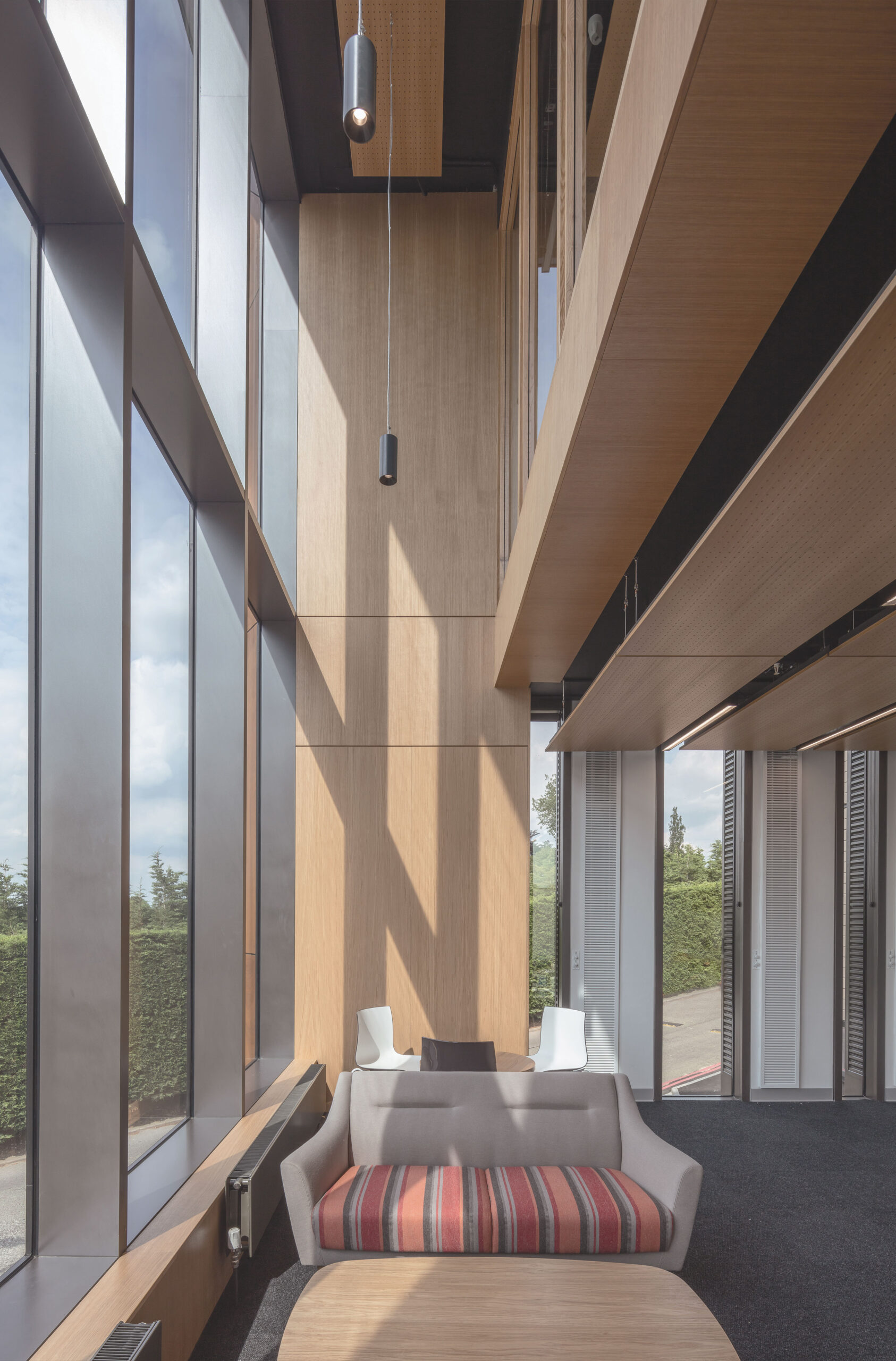

The Wolfson Building, University of Oxford

The Wolfson Building, University of Oxford

Befitting its research and the importance of engagement with the natural environment in the promotion of health, the forms are clad in familiar and natural materials comprising modular, repetitive elements of earthy terracotta that reference the context and character of the site and its history as a quarry. Timber frames provide a complement to highlight and identify entrances.
The facade is arranged in various combinations to create a unique architectural pattern broken up by full height slot window apertures that introduce daylight and view deep into the building. This sequence of windows expresses the variety of internal spaces, creating a flexible module for both cellular office and open plan workstations providing space for researchers to meet, share ideas and train supporting the various needs of the contemporary academic workplace.
An innovative solution for natural ventilation with acoustic buffering is incorporated within the reveals of the facade, ensuring the building is full of fresh air, and controlled natural light reinforcing the University’s commitment to sustainability, health and well-being.




fjcstudio acknowledges all Aboriginal and Torres Strait Islander peoples, the Traditional Custodians of the lands on which we work.
We recognise their continuing connection to Country and pay our respects to Elders past, present and emerging.
We extend this acknowledgement to Indigenous People globally, recognising their human rights and freedoms as articulated in the United Nations Declaration on the Rights of Indigenous Peoples.



